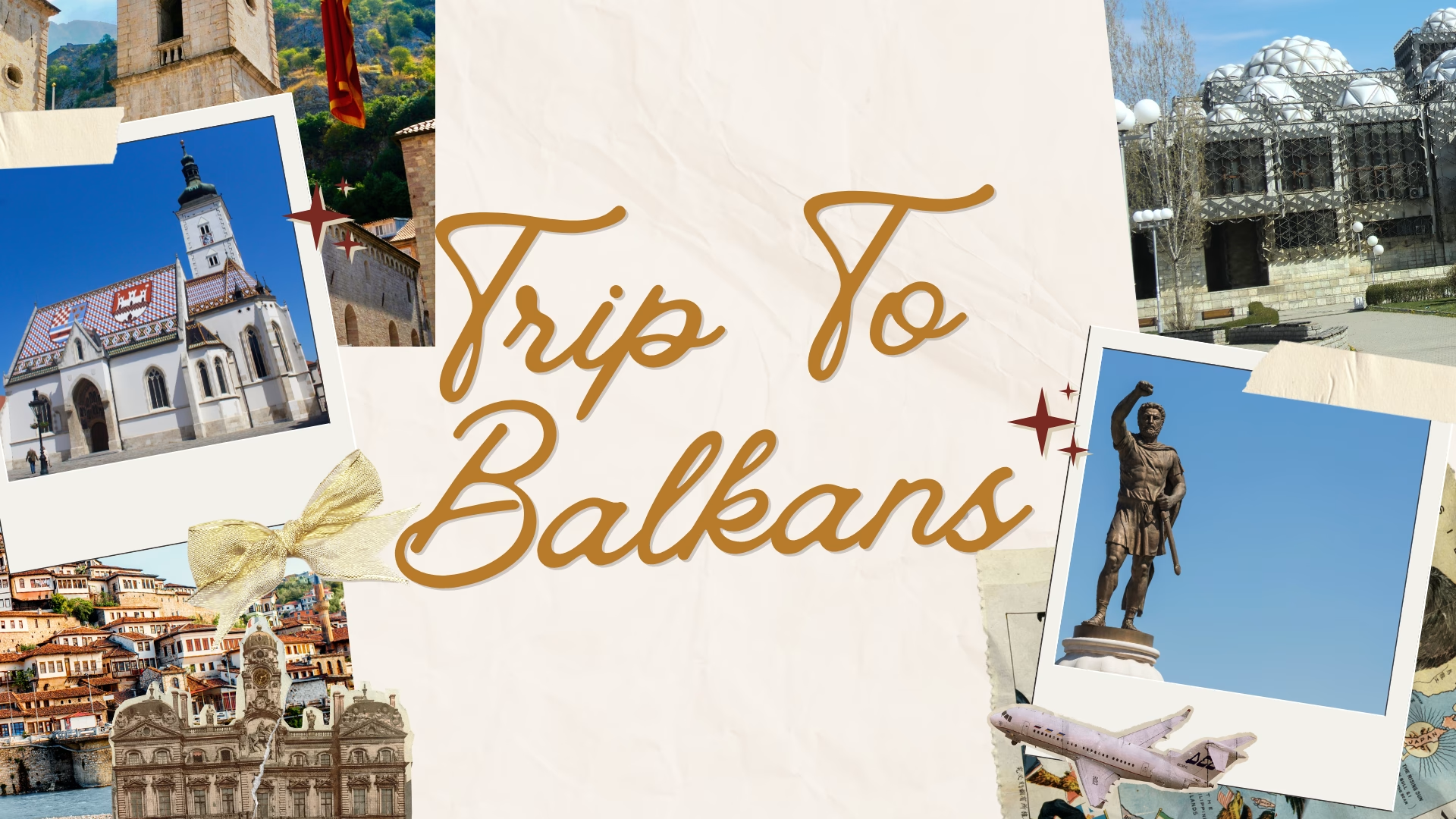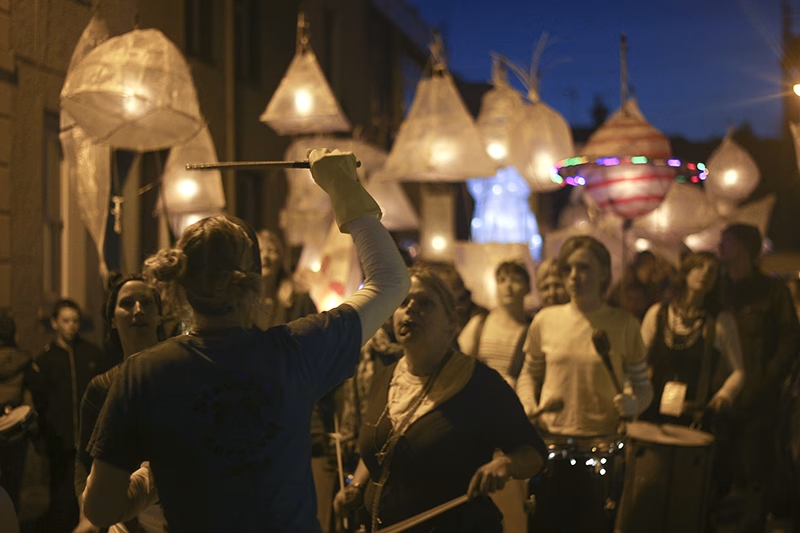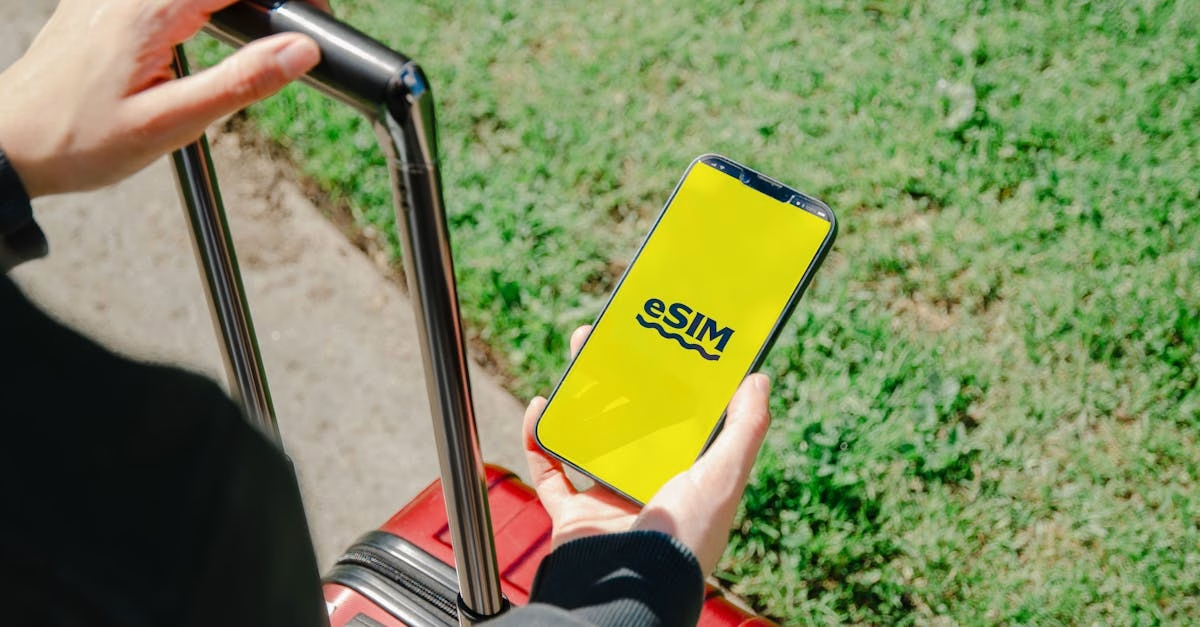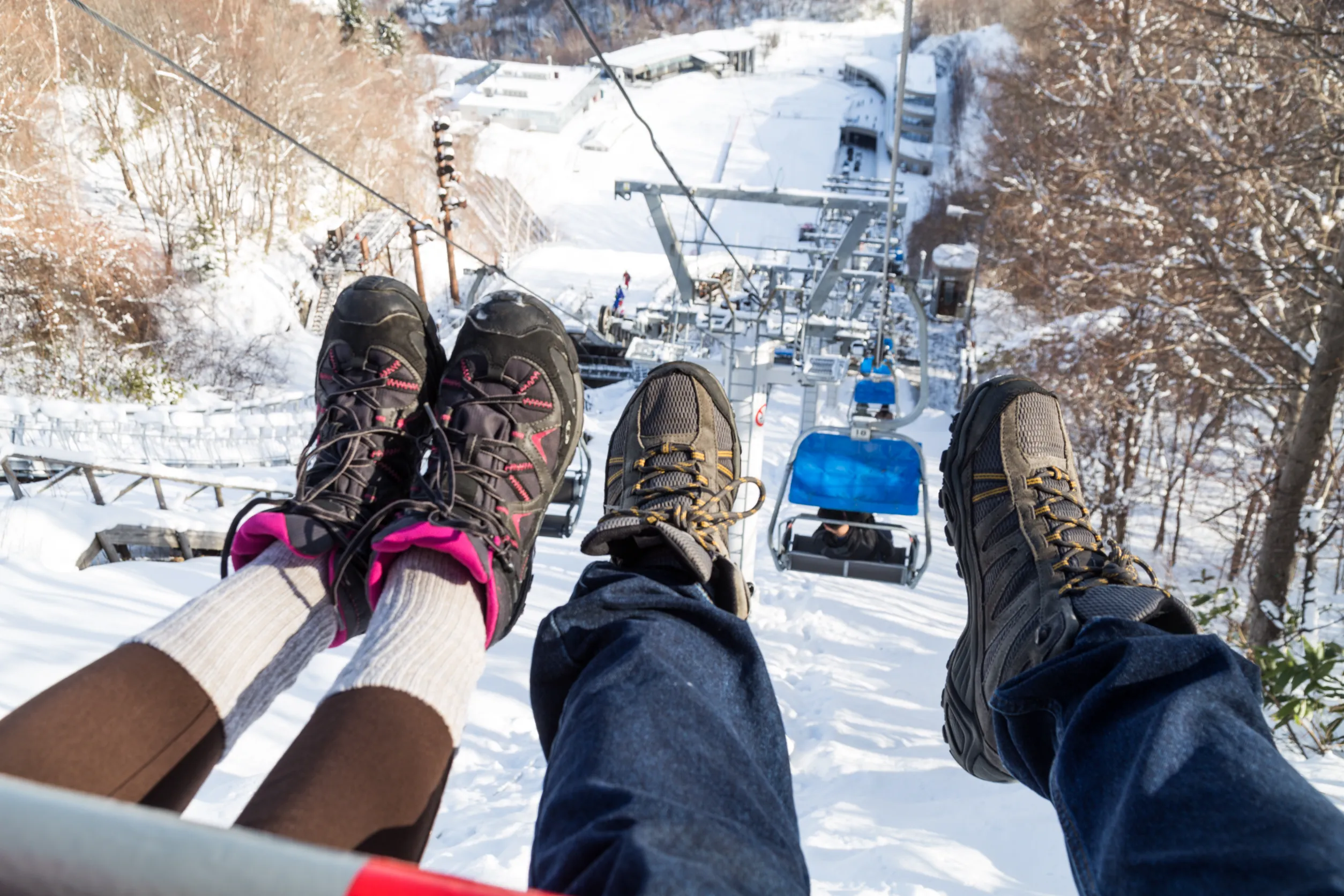Affordable Balkans Itinerary: Explore Europe on a Budget

Planning a trip through the Balkans can be an exciting adventure rich with culture, history, and natural beauty. The region offers many countries to explore, each with its own unique charm and experiences. From the lively streets of Belgrade to the serene landscapes of North Macedonia, travelers can discover fascinating sites and engaging activities without breaking the bank. An affordable Balkans itinerary provides a chance to experience diverse cultures, eat delicious local foods, and enjoy breathtaking landscapes, all on a budget.
Navigating the Balkans is made easier with various transportation options, including buses and trains that connect different cities and countries. This makes it possible to explore regions like Albania and Kosovo even without renting a car. Affordable accommodation can range from cozy hostels to comfortable guesthouses, offering a friendly atmosphere and a chance to meet other travelers. Enjoying budget-friendly local cuisines is possible with a range of simple, hearty dishes available in market stalls and family-run restaurants.
The beauty of the Balkans lies in its diversity of experiences. Adventure seekers can find countless outdoor activities, while those interested in cultural experiences can visit historic sites and participate in local festivals. From the coastal vibes of Croatia to the mountainous terrain of Montenegro, there’s something for everyone. These experiences, when woven together in a well-planned itinerary, allow travelers to fully appreciate what the Balkans have to offer.
Key Takeaways
- Traveling through the Balkans can be affordable with careful planning.
- Transportation options make it easy to explore without a car.
- The region offers diverse experiences, from culture to adventure.
Planning Your Balkans Journey
Exploring the Balkans is an adventure filled with beautiful landscapes and rich cultural experiences. Travelers can optimize their trip by choosing the right time to visit, budgeting smartly, and respecting local customs.
Best Time to Visit the Balkans
The Balkans offer diverse climates, so timing your visit is key. Spring (April to June) and fall (September to October) are ideal. During these months, weather is mild, making it perfect for outdoor activities and sightseeing. Summer can be hot, especially in coastal areas, but this is also when festivals are vibrant and beaches are bustling. Winter, while cold, is excellent for skiing in places like Bulgaria and Bosnia and Herzegovina’s ski resorts.
Budgeting for Your Trip
Traveling in the Balkans can be budget-friendly. Costs for food, accommodation, and transportation are generally lower than in Western Europe. Consider using intercity buses, which are frequent and affordable. Staying in hostels or guesthouses can cut lodging expenses. Eating at local restaurants saves money while offering authentic Balkan cuisine. Currency differs by country, so plan exchanges wisely. Remember to allocate funds for entry fees to attractions and emergency expenses.
Cultural Considerations
Respecting local customs enhances your travel experience. The Balkans are culturally diverse, with unique traditions and languages across countries. It’s important to learn basic etiquette, like greetings in the local language. Dressing modestly, especially in rural areas and religious sites, shows respect. Be mindful of historical sensitivities, particularly in regions with complex pasts. Understanding these considerations will enrich interactions with locals and ensure a memorable trip.
Transportation in the Balkans
Traveling in the Balkans offers unique experiences, with various modes of transportation available. Public transit covers many cities and towns, while car rentals provide flexibility for exploring more remote areas.
Navigating by Public Transit
Public transport in the Balkans is an efficient and affordable way to travel between cities. Buses are the most common form and have extensive networks connecting major cities like Belgrade, Sarajevo, and Sofia. Trains are available too, and though slower, they offer scenic routes through mountainous regions.
Many travelers use trains to go from Greece to North Macedonia; popular routes include Thessaloniki to Ohrid. While planning a trip using buses or trains, it’s advisable to book tickets ahead, especially in peak tourist season to ensure availability.
Car Rentals and Road Trips
Renting a car in the Balkans provides the freedom to explore rural areas and reach less accessible places. Popular road trips include driving along the Adriatic coastline or exploring the picturesque villages in Albania and Montenegro. Renting a car is easy, with many international and local agencies offering competitive rates.
Road conditions vary; highways are well-maintained, while rural roads can be narrow and winding. Ensure the rental covers insurance and border-crossing permissions if planning to travel between countries. This flexibility makes driving an attractive option for those seeking to explore at their own pace, providing opportunities to discover hidden gems off the beaten path.
For more information on backpacking through the Balkans, consider consulting the Balkans Transport Guide.
Country Highlights
Traveling through the Balkans offers a mix of history, culture, and stunning landscapes. From the Adriatic shores of Croatia to the historical treasures of North Macedonia, each country in the region presents unique experiences worth exploring.
Discovering Croatia
Croatia boasts a remarkable coastline along the Adriatic Sea, known for its breathtaking beaches and historic cities. One of the main highlights is Dubrovnik, often referred to as the “Pearl of the Adriatic.” Visitors can walk along its ancient city walls and explore the charming Old Town.
Split is another must-see destination, where the blend of modern life and ancient architecture is evident, especially at Diocletian’s Palace. Plitvice Lakes National Park, with its cascading lakes and stunning hikes, offers a sublime nature experience. The park’s network of walkways and trails allows visitors to get up close to its pristine waters and diverse wildlife.
Exploring Serbia
Serbia features a diverse array of cultural and historical attractions. Belgrade, the vibrant capital, is known for its energetic nightlife and historic sites such as the Belgrade Fortress. The city’s museums and galleries showcase a rich cultural heritage, including exhibitions at the National Museum.
Novi Sad, Serbia’s second-largest city, hosts the famous Exit Festival at the Petrovaradin Fortress, attracting music lovers worldwide. Fruska Gora National Park provides a serene escape with its monasteries and hiking trails. In the south, the city of Niš offers insight into Roman history, with attractions like the Niš Fortress and the archaeological site of Mediana.
Montenegro’s Must-See Locations
Montenegro is home to dramatic landscapes, ranging from mountain peaks to seaside villages. The Bay of Kotor is a highlight, featuring medieval architecture and stunning views. The towns of Kotor and Perast are particularly picturesque, offering cobblestone streets and historic churches.
Durmitor National Park, a UNESCO World Heritage site, is ideal for nature enthusiasts. The park’s rugged terrain includes Tara Canyon, one of the deepest canyons in Europe. Budva stands out for its vibrant nightlife and historic Old Town. Visitors can enjoy sunbathing on Jaz Beach or exploring the island of Sveti Stefan, a luxurious resort offering panoramic views of the Adriatic.
Albania’s Hidden Gems
Albania offers a plethora of lesser-known yet captivating sites. The town of Berat, known as the “Town of a Thousand Windows,” features well-preserved Ottoman architecture that earned it a UNESCO status. Visitors can explore its castle, museums, and beautiful valley views.
Gjirokastër, another city of historical importance, is recognized for its stone houses and ancient fortress. The Albanian Riviera, with pristine beaches like Ksamil and Himara, provides a more laid-back escape. Tirana, the capital, presents a mix of history and modern life, with attractions such as Skanderbeg Square and Bunk’Art, a museum in a former nuclear bunker.
North Macedonia’s Rich History
North Macedonia captivates with its historical depth and cultural diversity. Skopje, the capital, is famous for its mix of Ottoman, Byzantine, and modern architecture. Landmarks include the Skopje Fortress and the Stone Bridge, both integral to the city’s history.
Ohrid, a UNESCO World Heritage site, is known for its ancient churches and stunning lakeside location. The Church of St. John at Kaneo is a highlight, offering panoramic views of Lake Ohrid. Bitola, another historical city, presents the ancient ruins of Heraclea Lyncestis, offering insights into the region’s Roman and Byzantine past.
Accommodations
Finding affordable and comfortable lodging can enhance the travel experience in the Balkans. There are diverse options available in both bustling cities and quiet towns. Travelers can choose accommodations that fit different budgets, from hostels to guesthouses.
Choosing Where to Stay
Selecting a place to stay often depends on personal preferences and budget. In larger cities like Belgrade and Sofia, there are numerous options ranging from luxury hotels to budget hostels. While hotels offer comfort and amenities, hostels may provide social interactions and local insights.
For those seeking a more authentic experience, guesthouses are popular in rural areas. They often offer a homely atmosphere and local cuisine. Choosing locations close to public transport can also save time and money for day trips.
Affordable Lodging Options
Budget travelers can find economical lodging in the Balkans easily. Hostels are a popular choice, offering dormitory-style rooms and shared facilities. Book ahead in popular spots like Kotor to secure a place and snag the best rates.
Guesthouses in Albania and North Macedonia offer both affordability and comfort. They often include homemade meals, enhancing the culturally rich experience. For something mid-range, consider small boutique hotels that are cozy yet budget-friendly.
Utilizing booking platforms can help compare prices and features easily, ensuring affordable and suitable options. Staying flexible with dates can also lead to cheaper rates, especially outside peak seasons.
Local Cuisine
Exploring Balkan cuisine offers a variety of traditional dishes and budget-friendly dining options. Travel enthusiasts can enjoy flavorful meals rich in history and culture without spending much.
Tasting Traditional Foods
The Balkans region features a blend of culinary influences from different cultures. Dishes often include freshly grilled meats, hearty stews, and savory pastries. One must-try dish is Burek, a flaky pastry filled with meat or cheese, popular across the region. In Kosovo, the dish Shpija e Vjetër serves authentic Kosovan dishes like kofta casserole and roasted peppers.
For something sweet, Baklava is a delightful dessert made with layers of filo pastry, nuts, and honey or syrup. These traditional foods offer a taste of the rich culinary heritage found in the Balkans.
Dining on a Budget
Travelers can enjoy the flavors of the region without breaking the bank. Street food is a popular choice, with dishes like Ćevapi, small grilled sausages often served in a flatbread with onions and cheese, being quite affordable. In many towns, local eateries such as Pishat offer affordable meal options with local fish and veggie dishes.
Self-catering is another way to save money. Grocery stores sell local ingredients to make meals such as soups and salads. Dining at local bars and cafes, like Caffez in Kosovo, provides modern dishes at reasonable prices while contributing to a lively dining atmosphere.
Itinerary Samples
Exploring the Balkans offers a mix of historic sites, stunning landscapes, and vibrant cultures. This section provides sample trips for different lengths of stay, giving travelers insight into potentially memorable journeys through this diverse region.
One Week Itinerary
A week in the Balkans can cover highlights across a few countries. Travelers typically start in Belgrade, Serbia, enjoying its vibrant nightlife and rich history.
Next, they often head to Sarajevo, Bosnia and Herzegovina, to explore its unique blend of East and West.
The journey continues to Mostar, known for its iconic Stari Most (Old Bridge). In Dubrovnik, Croatia, visitors experience the walled city and stunning views of the Adriatic Sea. This trip ensures a blend of culture, architecture, and natural beauty.
Two Weeks Adventure
A two-week adventure allows for a deeper dive into the region. Starting again in Belgrade, travelers might explore lesser-known sites and enjoy the local cuisine. Moving south to Kosovo, they can visit Prizren, a city known for its historic streets and mosques.
Next stops often include Ohrid in North Macedonia, known for its beautiful lake and ancient churches, and Kotor, Montenegro, famous for its medieval architecture and scenic bay, a must-visit according to Finding Alexx. This itinerary offers a comprehensive overview of the Balkans’ diverse attractions.
Longer Stays and Deep Dives
Extended stays offer the chance to explore off-the-beaten-path locations. Longer trips might start with the scenic coastlines along the Adriatic. Travelers could explore the coastal towns and national parks of Albania, as suggested in a 30-day itinerary.
They can then venture into the central Balkans, visiting cities like Skopje and Tirana. In-depth exploration includes small villages where traditional lifestyles persist and hidden gems within the stunning natural landscapes. This opportunity for cultural immersion highlights the true essence of the region.
Outdoor Activities and Adventures
In the Balkans, visitors can enjoy a variety of outdoor activities, from hiking trails that offer breathtaking views to beautiful beach destinations with pristine waters. Additionally, national parks and nature reserves present opportunities for unforgettable experiences in nature.
Hiking and Trekking
The Balkans is a dream destination for those who love hiking and trekking. Famous trails like the Via Dinarica offer stunning views across Croatia, Bosnia and Herzegovina, and Montenegro. The peaks provide both challenging climbs and gentle treks suitable for various skill levels.
In Slovenia, Lake Bled is a popular starting point, with trails leading into the surrounding Julian Alps. Hikers can explore varied landscapes, from lush forests to rocky terrain. Each path offers its own unique sights and challenges, ensuring a memorable experience.
Beach Destinations
For beach enthusiasts, the Balkans boasts some of the most beautiful coastlines in Europe. Croatia’s Dalmatian Coast features crystal-clear waters and striking islands like Hvar and Brač. These islands are great for swimming, sunbathing, and water sports.
Montenegro’s Bay of Kotor combines stunning beaches with historical charm. The town of Budva offers lively nightlife alongside its sandy shores. Albania’s Riviera, with towns like Dhermi and Himara, provides a less crowded but equally enchanting beach experience, making it perfect for relaxation.
National Parks and Nature Reserves
The Balkans are blessed with numerous national parks and nature reserves that draw nature lovers from around the world. Plitvice Lakes National Park in Croatia is known for its beautiful waterfalls and serene lakes connected by walking paths and wooden bridges. The park is a UNESCO World Heritage Site and provides a tranquil escape into nature.
Montenegro’s Durmitor National Park offers activities such as ziplining and whitewater rafting. In Serbia, Tara National Park boasts diverse wildlife and dense forests. These parks not only offer incredible natural beauty but also exciting opportunities for adventure and exploration.
Cultural Experiences
The Balkans offer a rich blend of cultural experiences. Travelers can enjoy vibrant festivals, explore ancient historical sites, and connect meaningfully with locals. These activities provide deep insights into the region’s unique traditions and history.
Festivals and Events
The Balkans are home to numerous festivals that celebrate their rich cultural heritage. In Serbia, the Guca Trumpet Festival features lively music and local food. Thousands of visitors gather to immerse themselves in traditional Serbian culture.
In Croatia, the Dubrovnik Summer Festival offers an array of performances, from classical music to theater. This festival transforms the city’s historic old town into a stunning stage. It’s a highlight for both locals and tourists.
Romania’s Untold Festival, a popular electronic music event, attracts world-famous DJs. It’s an exciting way to experience modern Balkan culture alongside local traditions. These events blend entertainment with cultural education.
Historical and Archaeological Sites
The Balkans are rich in history, with numerous sites to explore. The ancient city of Plovdiv in Bulgaria, one of Europe’s oldest cities, is a treasure trove of Roman ruins and Ottoman architecture. Visitors can walk through history and admire the well-preserved structures.
Croatia’s Plitvice Lakes National Park, though known for its natural beauty, also offers glimpses into the region’s past with historical buildings and ancient pathways. This site blends natural wonder with cultural history.
Bosnia’s Mostar, with its iconic Stari Most bridge, provides insight into the region’s turbulent history and resilience. This site is a reminder of cultural ties and historical conflicts.
Engaging with Locals
Engaging with local communities deepens understanding of Balkan cultures. In small villages of Montenegro, travelers can enjoy homestays that offer authentic experiences of local life and traditions. These stays typically include local meals and participation in daily activities.
Participating in café culture is another way to connect with people. In cities like Pristina, cafes act as social hubs where visitors can interact with residents and partake in lively discussions about Kosovo’s cultural identity.
Language exchanges and community events in the region provide opportunities for meaningful connections. Visitors are encouraged to engage in conversations and share stories to truly appreciate Balkan hospitality.
Travel Tips and Safety
Traveling safely and staying connected in the Balkans is crucial for a worry-free trip. Being aware of healthcare availability and security measures helps ensure a pleasant experience.
Staying Connected
Staying connected while traveling through the Balkans is now more convenient than ever with eSIM technology. Instead of purchasing physical SIM cards in each country, travelers can opt for eSIMs, which offer seamless connectivity across multiple destinations.
Telekonek provides eSIM solutions with coverage in over 190 countries, including the Balkans. Their eSIMs offer:
- Easy Activation: Activate your eSIM with just a few taps upon arrival.
- Customizable Data Plans: Choose from a variety of data packages to suit your needs.
- High-Speed Internet: Enjoy 4G LTE/5G speeds throughout your journey.
- No Hidden Fees: Transparent pricing ensures you know exactly what you’re paying for.
For more information and to purchase a Telekonek eSIM, visit their website: Telekonek eSIM
While exploring rural areas, it’s advisable to download offline maps and translation apps, as cell reception may vary. Carrying a portable battery pack is also recommended to keep your devices charged during excursions.
Embracing eSIM technology enhances your travel experience, providing reliable internet access without the hassle of physical SIM cards.
Health and Medical Care
Healthcare in the Balkans varies by country, but urban areas generally have good medical facilities. Travel insurance with coverage for medical emergencies is essential. In case of illness, public hospitals can offer services, but private clinics might provide faster care.
Pharmacies are common, and medications for common ailments are accessible. It’s important to carry one’s own prescriptions and a basic first aid kit. Tap water is generally safe in cities, but bottled water is advisable in rural areas.
Vaccinations are not typically required for Balkans travel, but checking current health advisories can ensure peace of mind. Knowing emergency contact numbers, like police or ambulance services, is practical for dealing with unexpected situations.
Safety Information
The Balkans is a generally safe region for travelers, but taking precautions is smart. Like most places, urban centers can have areas to avoid, especially at night. Staying in well-lit and populated areas reduces risks.
Pickpocketing can occur in crowded areas, so keeping valuables secure is vital. Familiarizing oneself with local laws and customs is a good practice to avoid misunderstandings. When driving, knowing traffic rules and road conditions can aid in a smooth journey, especially since some roads may be narrow or poorly lit. Using registered taxis or reputable car rentals adds another layer of safety.
Sustainable Travel
Sustainable travel in the Balkans focuses on reducing environmental impact and supporting local communities. Embracing eco-friendly practices and contributing to local economies can enhance the travel experience while preserving the region’s natural and cultural heritage.
Eco-Friendly Practices
Travelers can make a positive impact by choosing eco-friendly accommodations. Many hotels and hostels in the Balkans prioritize renewable energy, water conservation, and waste reduction. Guests can contribute by reusing towels, turning off lights, and minimizing water use.
Public transport and bicycles are great options for exploring cities like Belgrade or Skopje. These green alternatives lower carbon footprints compared to car travel. Visitors should also consider guided tours that focus on sustainability, emphasizing experiences that protect wildlife and natural habitats.
Supporting Local Economies
Supporting local economies is vital for sustainable travel. Tourists can contribute by eating at locally-owned restaurants, where they can enjoy traditional Balkan dishes. Visiting local markets to buy handmade crafts and regional products ensures money stays within the community.
Staying in family-run accommodations rather than global chains helps support small businesses. Engaging with community-led attractions and experiences also provides a deeper cultural connection. By participating in regional festivals and events, travelers contribute directly to the local economy while gaining authentic experiences.
Parting Thoughts
Traveling through the Balkans offers a unique blend of history, culture, and natural beauty at an affordable price. This region is perfect for travelers looking to explore beyond the typical tourist destinations.
Each country within the Balkans offers distinct experiences. Whether it’s the bustling streets of Belgrade, Serbia, or the serene mountains of Montenegro, there’s something for everyone.
For budget-conscious travelers, public transportation and affordable accommodations make it easy to stick to a budget. Additionally, local cuisines are both delicious and reasonably priced, giving every visitor a taste of authentic regional flavors.
With the variety of itineraries available, from a quick 10-day tour to an extended stay, travelers can customize their trips to fit their interests and time constraints.
The Balkans are rich with history and culture, making them a worthwhile destination for anyone seeking adventure and discovery. Exploring lesser-known towns and villages provides an opportunity to experience genuine local hospitality and traditions.
Using these tips, travelers can feel confident venturing into the Balkans and enjoying all that this dynamic region has to offer. Whether traveling solo or with others, the Balkans promise memorable experiences and plenty of stories to share.


